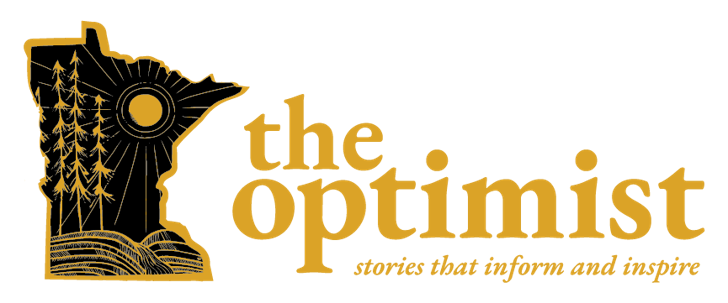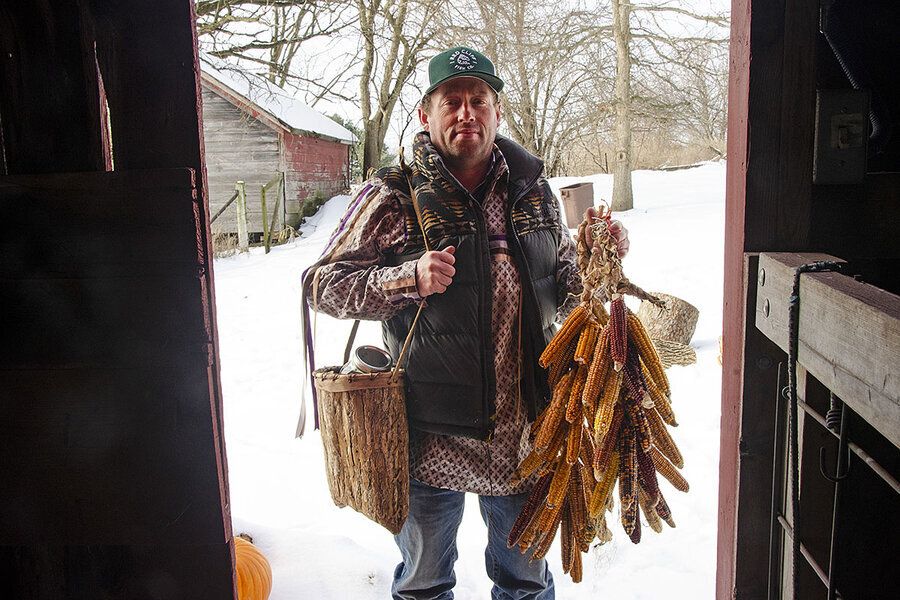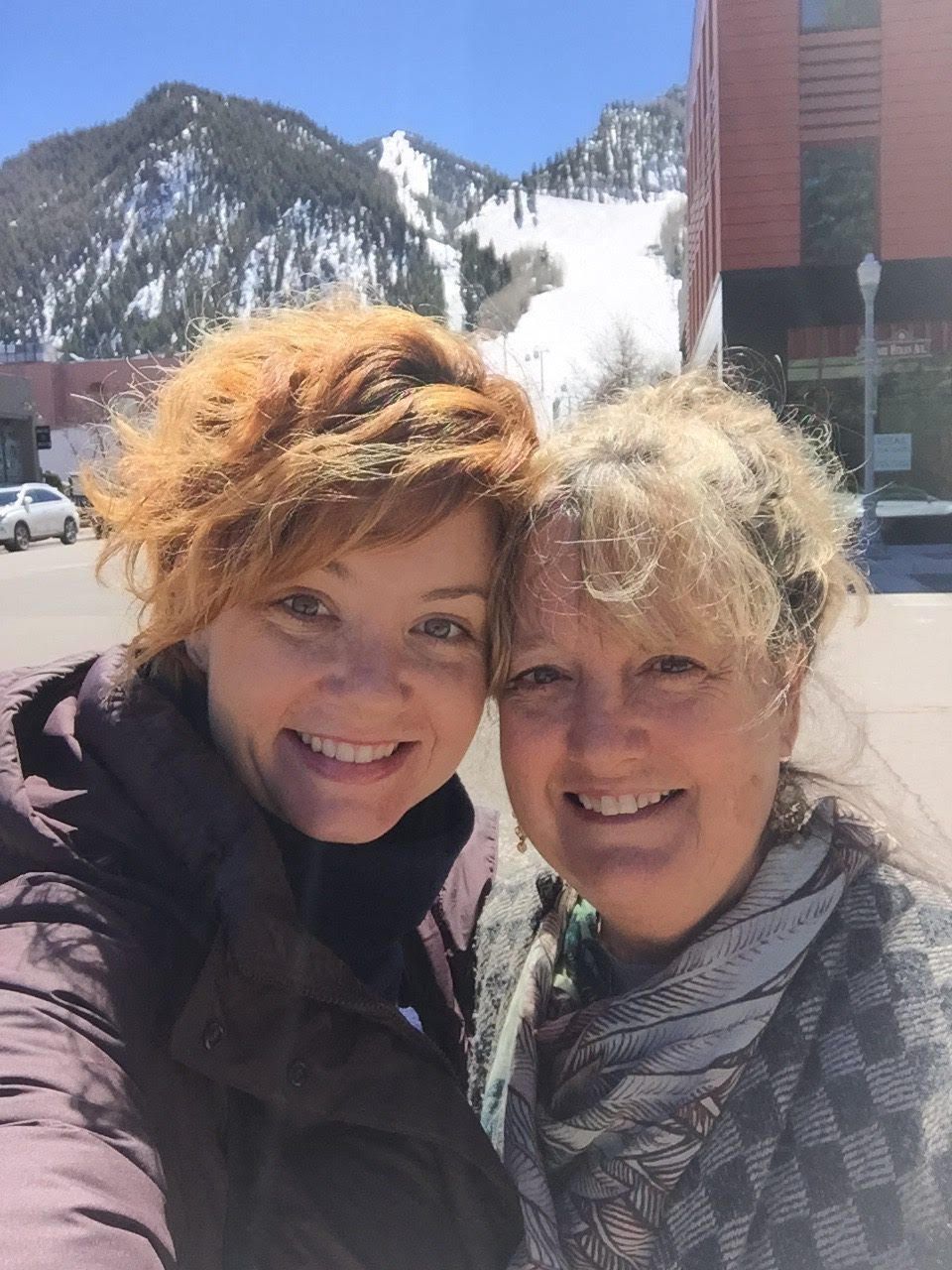Food and gratitude: A story on Indigenous food and the people lifting it up
What is "food sovereignty"? And check out "The Wedge" podcast this Thanksgiving!
What is "food sovereignty"? And check out "The Wedge" podcast this Thanksgiving!

It's a holiday week!
Hi friends, Nora here. Happy Thanksgiving! I hope you all know that I'm extremely grateful to you for your interest in the work of The Optimist. I'm talking to YOU!
It's been about one year since The Optimist became an LLC and the landing page launched. We've been growing and learning since then. Someday we'll outgrow our fiscal sponsors and become a nonprofit.
Right now I'm wrapping up a program with the Google News Initiative that's helping me prepare to hire staff in the coming months. That's been part of my plan for more than a year, and it's thrilling to see the pieces come together.
Here's another thing I'm grateful for: The great Gail Rosenblum, editor of the Inspired section of the Star Tribune, gave The Optimist a shout out (and link) in her latest column. Thanks, Gail!
For journalism this week, I'm pulling a deep cut from the Christian Science Monitor, available through the solutions journalism exchange. It's a story from last year about a resurgence of Indigenous food traditions in Wisconsin, Minnesota and beyond.
This gives some insight on what kind of food would have been on the table at the first Thanksgiving. It also explains the benefits of reviving today these traditional growing and gathering habits.
Be sure to read to the end for my favorite podcast of the year (and I listen to a lot) and another good news story from the Minnesota woods.

Daniel Cornelius, a member of the Oneida Nation of Wisconsin, grows native flint corn in Stoughton, Wisconsin. He is part of a growing “food sovereignty” movement among Native Americans. (Photo courtesy of the Christian Science Monitor)
Seeds and beyond: Native Americans embrace ‘food sovereignty’
By Richard Mertens, The Christian Science Monitor
In spring 2020, as COVID-19 swept the nation, Daniel Cornelius planted. A member of the Oneida Nation of Wisconsin, he lives in the rolling farm country south of Madison, where he planted carrots and tomatoes, as well as traditional Native American crops – beans, pumpkins, and corn in hues ranging from cream to deep red and bearing names like Tuscarora white, Mohawk yellow, and Bear Island flint.
He helped others plant, too. In June he took his small walk-behind tractor north to help members of the Lac du Flambeau Band of Lake Superior Chippewa start gardens, heaping the soil in long mounded rows in imitation of traditional planting hills. He brought squash seeds to the reservation of the Menominee Indian Tribe of Wisconsin, where members have been building raised beds after ancient Menominee practice. He tapped box-elder trees for syrup and gathered wild rice, and in September he brought them to a bartering event on the Oneida reservation, near Green Bay, where he traded them for peppers, quail eggs, and corn soup.
“Almost everyone wanted that box-elder syrup,” he says.
Mr. Cornelius is part of a growing “food sovereignty” movement among Native Americans, an effort aimed at increasing local food production and reviving Indigenous agricultural and culinary practices. It’s a broad-ranging movement that includes families growing vegetables in backyard gardens and an ever-expanding network of regional and national organizations devoted to fostering intertribal cooperation, sharing agricultural know-how, and promoting the use and preservation of traditional crop varieties.
“People are hungry – literally hungry to eat these foods,” says Mr. Cornelius, who is also a technical adviser for the Intertribal Agriculture Council, based in Billings, Montana, and an instructor at the University of Wisconsin-Madison. “But also, in a more figurative sense, they’re just hungry for knowledge.”
Story continues after the promotion.
Promotion from The Optimist
Help us grow! Share this newsletter with friends!
Support The Optimist right now by helping us grow our mailing list! Forward an issue to a friend. Or send them a link to our sign up page!
Send a friend to our mailing list!

For many Native Americans, the return to traditional foods is part of a wider effort to “decolonize” their people, a way to repair the economic and cultural damage inflicted by European Americans who drove them from their lands, confined them to reservations, sent them to boarding schools, and tried to sever them from their old ways. It means not just planting old seeds but reviving the economic and cultural life, the ceremonies, the customs and beliefs, around food and food production.
In a practical sense, food sovereignty offers a path toward greater self-sufficiency and economic opportunity in poor communities. Perhaps more critical are its potential benefits for public health. Native Americans face high rates of diabetes, heart disease, obesity, and other conditions that food sovereignty advocates say result from a dependence on processed foods.
A bowl of Cornplanter yellow beans that Rebecca and Stephen Webster grew last year on the Oneida reservation, near Green Bay, Wisconsin. The Websters grow 20 kinds of beans, many of them acquired from Seed Savers Exchange, which has recently become involved in helping Native Americans recover old varieties.
“We’ve got to get back to a diet and food system that our bodies and our babies can handle,” says Gary Besaw, head of the Department of Agriculture and Food Systems on the Menominee reservation.
Since it emerged, COVID-19 gave new urgency to these efforts. The coronavirus hit Native American communities hard: In December 2020, the Centers for Disease Control and Prevention reported that Native Americans and Alaskan Natives were 3 1/2 times more likely than white Americans to become infected with the virus. Yet, while COVID-19 has revealed the vulnerability of Native peoples, it has also inspired more of them to plant, fish, gather, and hunt.
“People are seeing the weakness within our current food system,” says Rebecca Webster, who with her husband, Stephen, grows corn and other traditional crops on the Oneida reservation. “They want to know where their food is coming from. They want to take control back.”
Much of the food sovereignty movement focuses on seeds: growing and preserving them, as well as finding and distributing old and not-yet-forgotten varieties. Some of this work requires research, like figuring out where a seed company acquired its varieties long ago. It also involves hunting down a variety that someone has been growing – and then producing enough seed to share. Organizations like Seed Savers Exchange, based in Decorah, Iowa, and long devoted to promoting heirloom seeds, have in recent years been growing Native varieties and sending out seeds to a small number of established growers. In addition, an expanding universe of workshops and YouTube videos is available to teach aspiring growers how to use Native agricultural techniques.
The 'Three Sisters'
The most popular seeds are the “Three Sisters” of Indigenous agriculture: corn, beans, and squash. They are traditionally grown together in mounds, as the Websters do on the Oneida reservation. The cornstalks serve as a trellis for the bean vines, while the beans, which are legumes, enrich the soil for the corn. The squash sprawls out all around. A modification of this strategy is to grow the corn and beans in mounded rows, with squash on the ends. Many Native growers also plant tobacco and sunflowers.
When the pandemic struck, the demand for seeds soared. People had more time at home; they also were rattled by local food shortages. On the Meskwaki Settlement in Tama, Iowa, Shelley Buffalo, local foods coordinator for the Meskwaki Food Sovereignty Initiative, grappled with a “huge increase” in requests for seeds. “There were many people who were gardening for the first time,” she says. Appeals to the Traditional Native American Farmers Association “nearly depleted what we had,” says Clayton Brascoupé, a farmer in Tesuque Pueblo, New Mexico, and the group’s program director.
“There were people contacting us from a lot of new places,” he says. “They said, ‘Can you send seed?’”
But it’s not all about seeds. Native Americans are also raising bison, spearing fish, picking chokecherries, harvesting wild rice – and much more.
It’s a movement that touches every tribe in the United States and reflects both the geographical and historical diversity of Native American communities. The Quapaw Nation of Oklahoma raises bison on lands recovered from lead and zinc mining and operates its own meat processing plant. The Muckleshoot of Washington state have hosted workshops on how to fillet a salmon and slice up an elk. Ndée Bikíyaa, or People’s Farm, is trying to revive agriculture among Arizona’s White Mountain Apache. Minnesota’s Red Lake Ojibwe sell mail-order wild rice and chokeberry jam. And in Hugo, Minnesota, just outside the Twin Cities, the organization Dream of Wild Health teaches Native children how to garden; a program for teenagers is called Garden Warriors.
“This year was a big wake-up call for our tribe,” says Greg Johnson, a member of the Lac du Flambeau Band and an expert in cooking muskellunge, a predatory fish found in northern lakes, which he does by wrapping it in birch bark and baking it in the ground, under a fire. Mr. Johnson says that worries over the food supply sent twice the number of his band than usual out to spear walleyed pike in northern Wisconsin lakes early last spring, a tradition among his people. More people hunted deer later in the year; he taught some of them how to can the venison.
“In many respects, for me it was really good to see that,” he says. “There were people you never thought would get wild rice. There were people who you never thought would get wild medicines. It was really incredible.”
Story continues after the promotion.
Promotion from The Optimist

Did you catch our Artist's Joy feature this month?
We featured the beautiful artwork of Kandace Creel Falcón, including descriptions by Kandace earlier this month. The pieces Kandace chose to feature are part of a larger project that reflects Kandace’s family history and the history of the Midwest.
See the art and read the story here!
Chef participation, too
Getting the food is only part of the movement. A growing number of chefs are promoting Native cuisine, among them Sean Sherman, an Oglala Lakota and recipient of a James Beard Award. The founder and CEO of The Sioux Chef business in Minneapolis, Mr. Sherman directs a food lab devoted to teaching Native culinary approaches. COVID-19 delayed his plan to open a restaurant, but it inspired a new form of outreach: ready-to-eat meals prepared in the Twin Cities and distributed to Native communities around the region. By December, a crew of 24 workers was sending 6,000 meals a week. It distributed 500 meal kits before the holidays, including the fixings for what Mr. Sherman describes as a Native grain bowl – Potawatomi corn, bison meat, dried blueberries, and puffed wild rice. “That was a fun one,” he says.
Efforts to revive Native foods are not new. Mr. Brascoupé recalls an intertribal meeting in Gallup, New Mexico, in 1992 at which older farmers voiced concerns about their dwindling numbers. “They also saw a decline in people’s health,” he says. “They tied those two together.”
In the years since, Mr. Brascoupé has seen a steady increase in the ranks of Native farmers. And what started as a rural movement, he says, has moved to cities, where many Native Americans live – to community gardening and programs teaching Native gardening and culture to children. Mr. Brascoupé attributes much of the resurgence not to tribal initiatives, which have become widespread, but to younger individuals carrying on the work of their elders. Once a young farmer himself, he now has grandchildren who farm.
“A lot of what we see now started with young people,” Mr. Brascoupé says. “It was more from the bottom up than the top down, from tribal governments.”
Indeed, the food sovereignty movement builds upon the perseverance and determination of individuals and families who have worked over many years to keep Native food traditions alive. One of these people is Luke Kapayou, who grew up on the Meskwaki Settlement. “When I was growing up, all of us, we had to help with the gardens,” he recalls. “Most of the families had their own gardens.”
As Mr. Kapayou got older, however, he noticed that fewer people were gardening. And those still doing it were planting fewer old varieties – mainly just corn, the most prized of Native foods. He resolved to keep growing traditional beans and squash, and he began to seek out other varieties both on and off the settlement. He consulted old ethnographies. He even tried – unsuccessfully – to track down seeds at a New York museum.
“Most of the seeds that me and my family are growing in our garden are what my parents and great-grandparents were growing,” he says. “They’ve been growing for a thousand years. I don’t know, I think I believe these seeds are sacred. They’re very special. It makes me want to keep growing them, and I want to make sure our kids keep growing them.”
Plenty of challenges
Despite its successes, the food sovereignty movement still faces plenty of challenges. Growing old crop varieties can be labor-intensive: If done in the traditional way, they are planted and harvested by hand, with the three main crops – corn, beans, and squash – planted together. Also, growers need to take care that nearby field crops, especially corn, don’t cross-pollinate with traditional varieties. And it takes time to preserve the foods – usually by drying – and to cook them up in traditional dishes, such as corn soup, which Mr. Kapayou prepares outside in an old kettle over a wood fire. In addition, efforts to take advantage of Native treaty rights for hunting and fishing continue to meet resistance – as when a group of non-Native people harassed Mr. Johnson while he speared walleyes at a Wisconsin lake last April.
Nor is it easy to get people to renounce modern processed foods. Nicky Buck knows this well. A member of the Prairie Island Indian Community in Minnesota, she grew up behind a McDonald’s and ate sugar sandwiches as a child – and developed kidney disease as an adult. Today she eats – and promotes – Native foods in her community.
“You just have to retrain your palate,” she says. “You have to decolonize your palate.”
Decolonizing the palates of the young poses a special challenge. Parents make sloppy Joes out of bison meat and substitute flint corn for wheat pasta. Ms. Webster, the mother of two teenage daughters, says, “We’re trying to show that corn is cool enough even though there’s a frozen pizza looking at them.”
The gardening itself may occasion a complaint from younger ones, but it’s good family time. Indeed, the food sovereignty movement is often about bringing people together – growing, harvesting, trading seeds and food, and, of course, eating. A Native foods cooperative on the Oneida reservation has 15 member families and saw more applications to join last year than ever before. “There are a lot of folks showing interest,” says Lea Zeise, who manages the co-op.
A year-round effort
Food sovereignty is a year-round effort. Over the winter, gardeners have been cooking up what they harvested and preserved in the fall – the dried beans, the canned venison, the corn boiled and dried and stored in glass jars. In northern Wisconsin, members of the Lac du Flambeau Band were busy with winter spearing, chopping holes through 28 inches of ice to get to the fish.
“We’re going to get as many muskies as we can,” says Mr. Johnson. “We have a lot of younger people who want to do this.”
Others are looking forward to spring – planning their gardens, shelling dried corn for seed, and in some cases looking beyond the pandemic to a resumption of the workshops and conferences that have helped spread the food sovereignty movement. “People can’t wait to get together,” says Mr. Cornelius.
In the meantime, Mr. Cornelius, like other food sovereignty advocates, is heavily booked on Zoom. He’s also full of plans for his own farming. In midwinter he was thinking he should plant his greenhouse soon. He was also trying to figure out how to tap more trees in early spring, including a stand of silver maples on land he just bought last year – 51 acres, mostly woods, plus the derelict buildings of an old dairy farm. He hopes to bring in cattle. His friends say he should raise bison. Maybe someday, he tells them.
“One step at a time,” he says.
This story was originally published on Feb. 22, 2021. It is part of the SoJo Exchange from the Solutions Journalism Network, a nonprofit organization dedicated to rigorous reporting about responses to social problems.

'The Wedge' series follows journalist Erica Anderson (left) as she strives to maintain a relationship with her mother Kini Christie (right) despite their diverging beliefs about COVID-19. (Photo courtesy of Colorado Public Radio)
Some more food for thought
Here's some good news from Minnesota Public Radio about efforts to restore the state's iconic white pine trees. Read or listen here.
And, finally, I suspect some of you may have some tense conversations with loved ones at your holiday get-togethers. The fracture points these days are everywhere.
I had a chance to preview a show called "The Wedge" about a journalist and her mother who go deep into their different opinions about COVID-19 and vaccines. It's remarkably honest and raw and heart-warming. I loved it. And no one paid me to say so.
The series comes from an organization called Spaceship Media who's mission is to use journalism to bridge divides. Their work has been a huge inspiration for The Optimist project Shades of Purple: Dialogue across difference in greater Minnesota.
“What we have learned over the years of hosting difficult conversations is that when given a chance – space and support – people can engage productively across deep social and political fault lines,” said Spaceship Media founder Eve Pearlman in a press release about the show. “Even more importantly, it feels good to be able to do this. Living at odds or in disharmony with those around us is toxic. It feels far better to remain connected.”
"The Wedge" has two episodes out already through Colorado Public Media. The remaining four will be released on the next four Fridays. If you're inclined to check it out, you can find the series on CPR.org, Apple Podcasts and Spotify.

'The Wedge' is a series about family rifts and the courage to have difficult conversations. (Courtesy of Colorado Public Radio)
Thanks for sticking to the end!
Next week we've got a story on the Waldsee BioHaus, a model of energy conservation and green building design in northern Minnesota.
Until then,
♥ Nora, founder of The Optimist
Our mailing address:
P.O. Box 298
St. Michael, Minnesota 55376
Copyright © 2022 The Optimist, All rights reserved.

